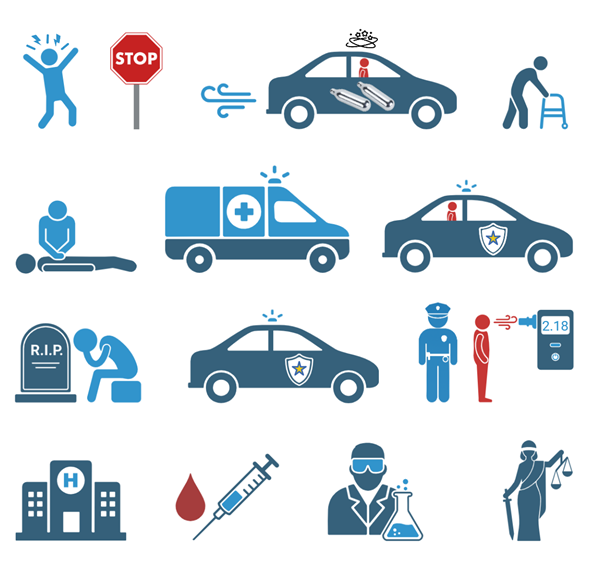Laughing gas is no laughing matter: How recreational use endanger lives in traffic
DrugsAnders Valentin A. Nielsen, M.D., Ph.d. student Published 5 Nov 2025
Laughing gas (Nitrous oxide: N2O) is a euphoric and sedating gas that is used in both medical and recreational settings. It poses a particular danger when combined with driving. This is an increasing problem for law enforcement. Previously, it was believed that N2O was eliminated so quickly from the body that a sample to prove intake could not be obtained in time. However, Anders Nielsen and colleagues from the Institute of Forensic Medicine, Aarhus University, challenge this old dogma in an ongoing study.
New study to assist law enforcement in keeping the roads safe
Preliminary results from Aarhus University show that N2O can be detected for longer than previously believed, taking the detection window from half an hour to several hours. However, to the greatest practicable extent, the sooner the evidence material is secured, the better.
Researchers evaluated exhaled air, blood, saliva, urine and a handheld N2O sensor, to explore which biological samples are best for detecting N2O. The sensor can be used roadside at the point of arrest, akin to an alcohol breathalyzer.
A placebo-controlled study with 30 healthy volunteers was undertaken. The need for a control group was twofold:
- Trace amounts of N2O are present in the atmosphere and therefore also in humans. A baseline for non-exposed individuals was therefore needed.
- The control group allowed researchers to test the reliability of the screening device in distinguishing between non-exposed and N2O- exposed individuals.
Air and saliva samples can be collected roadside in gas- tight bags and vials, while blood and urine require transport to the nearest hospital to get a sample, costing potentially precious time for N2O to be eliminated from the body. Law enforcement and researchers are joining forces to solve this complex challenge.
Fatal traffic accidents involving N2O
Sadly, several people have been killed due to a driver inhaling N2O and causing a traffic accident in Denmark. For now, N2O is not on the list of illegal euphoric drugs, so it is technically not illegal for a driver to have N2O in the blood while driving. A process to change this law is currently being undertaken.
An illustration of the entire sequence of events in an N2O related traffic accident is illustrated below. After screening with a handheld device, a confirmatory test is needed. At present, it is unclear whether blood, exhaled air, or saliva is most suitable for this purpose.

Conclusion
This new discovery increases law enforcement’s capabilities to prove N2O intake. This enhanced capability can help provide closure to the next of kin by confirming that N₂O was the cause of the accident. Additionally, if drivers are aware they can be convicted of driving under the influence of N2O, it might deter some recreational users from driving under its influence, which contributes to safer roads for all in society. However, a change in the law of Denmark is still required before it is publishable.
Disclaimer: This research is financially supported by The Victims’ fund (Offerfonden). The assessments and viewpoints expressed in the material are those of the authors and do not necessarily reflect those of the Council for the Victims’ Fund.
The article is written by
Anders Valentin A. Nielsen
M.D., Ph.d. student
Aarhus University
Department of Forensic Medicine
on the request of PopNAD



